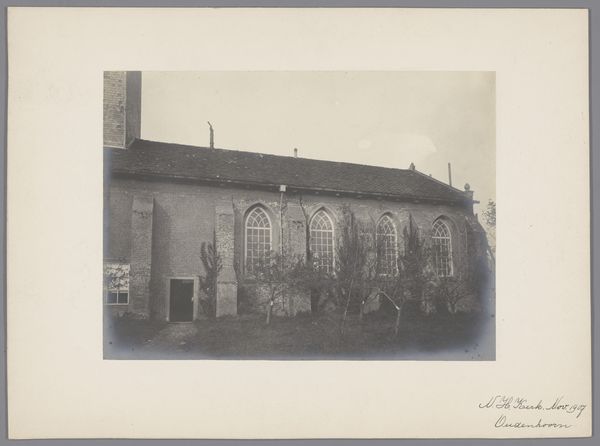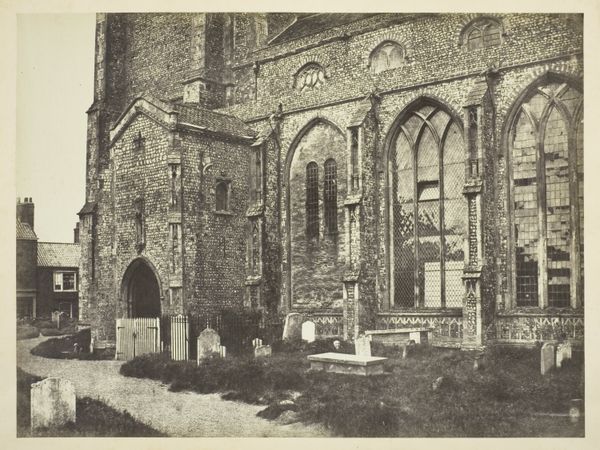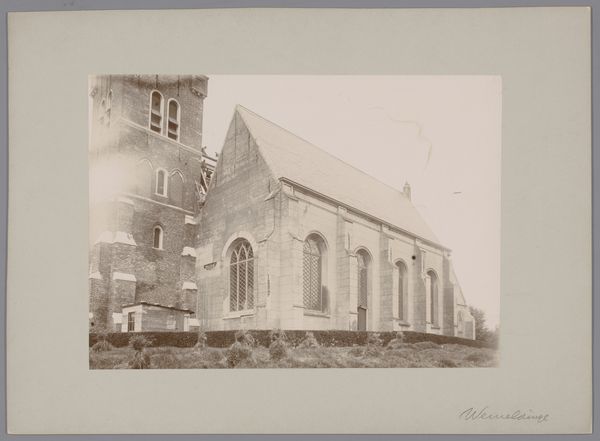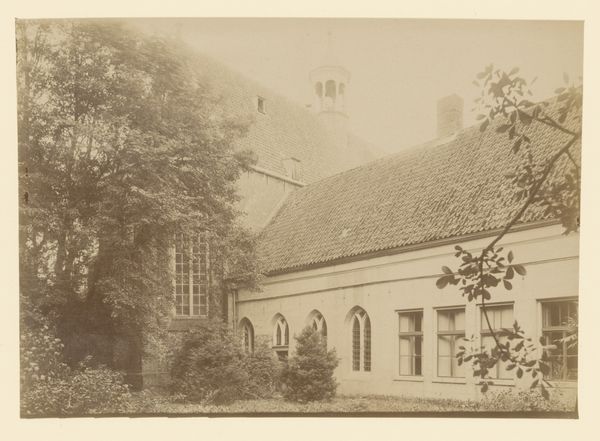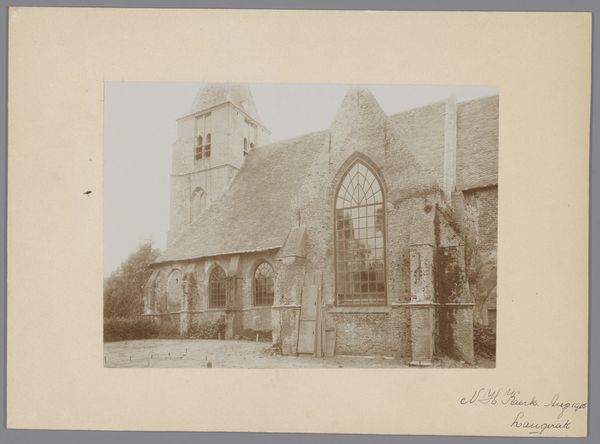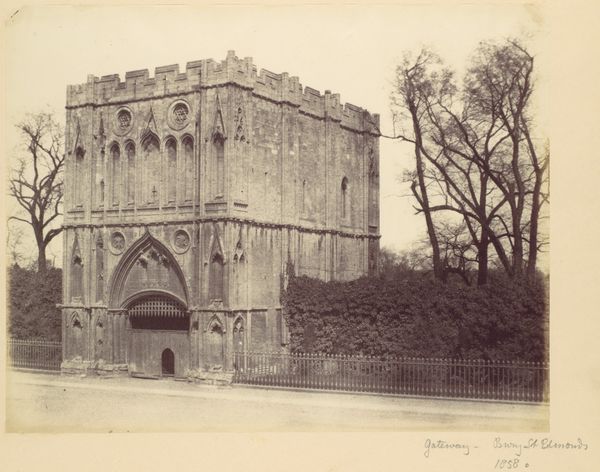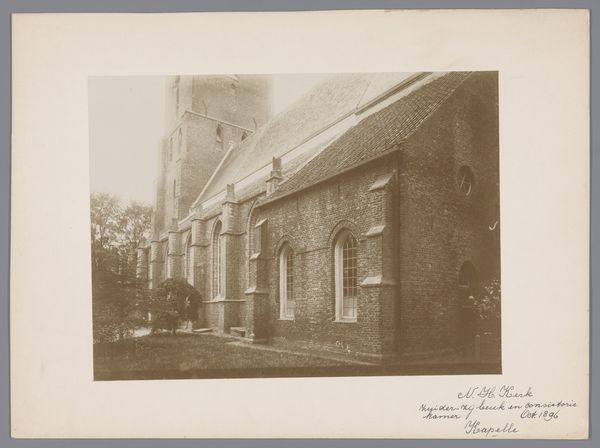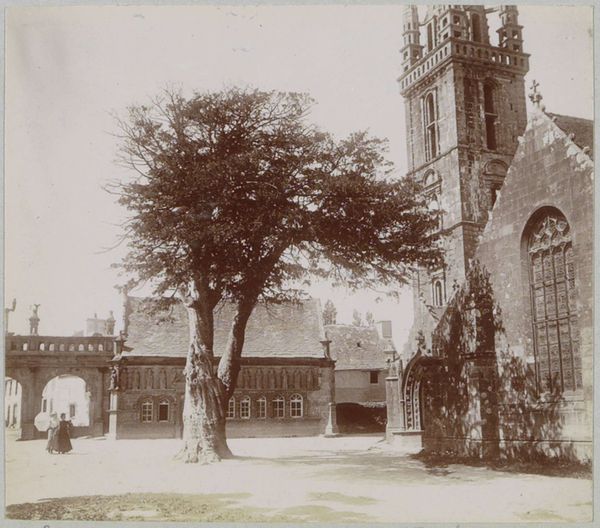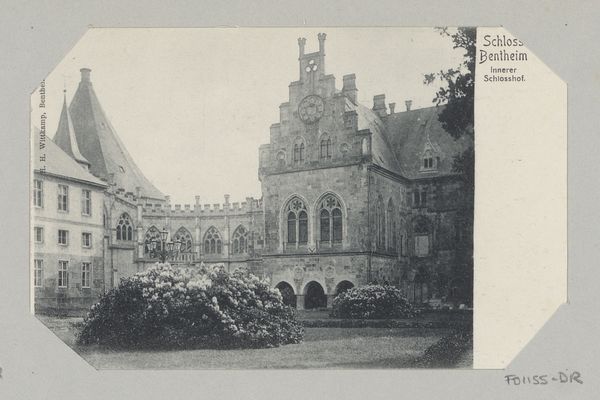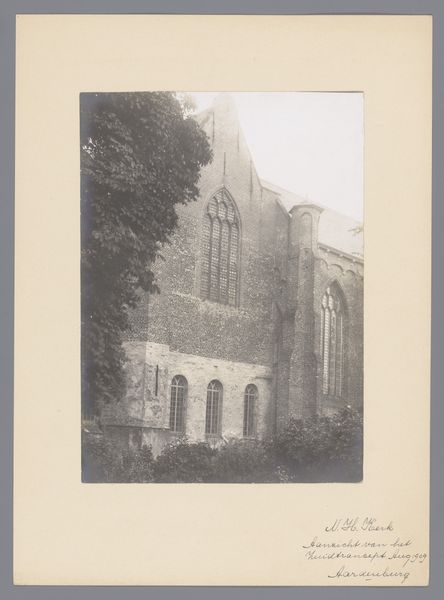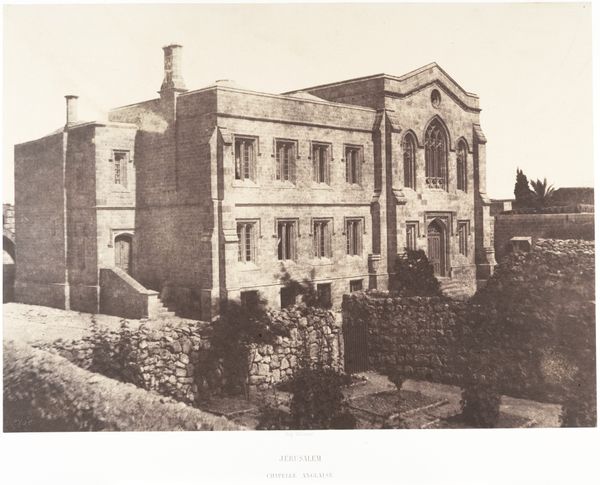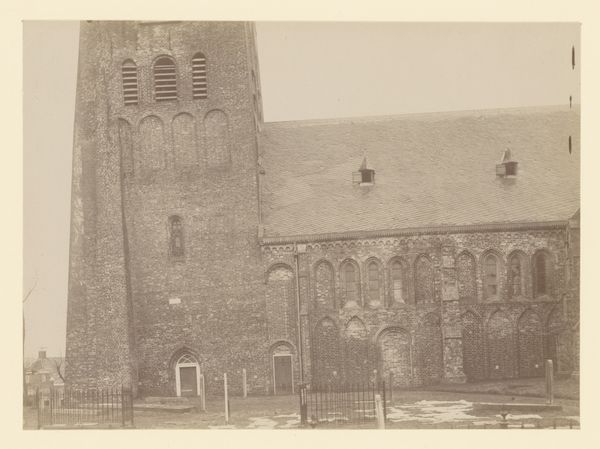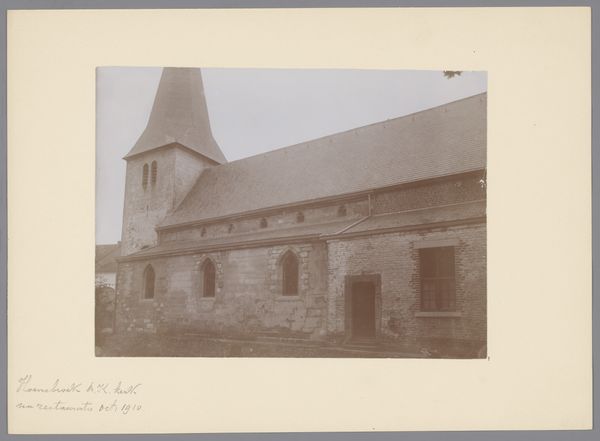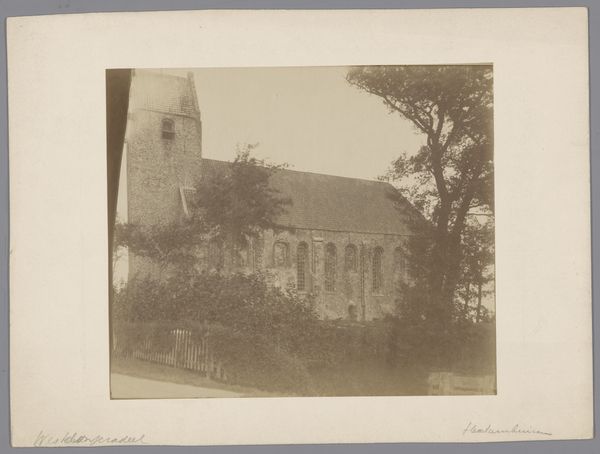
architecture
#
photo of handprinted image
#
water colours
#
photo restoration
#
historic architecture
#
old-timey
#
arch
#
19th century
#
watercolour bleed
#
watercolour illustration
#
watercolor
#
architecture
#
historical font
Dimensions: 21.7 x 27.5 cm. (8 9/16 x 10 13/16 in.)
Copyright: Public Domain
Editor: Here we have Alfred Capel Cure's "St. Peter's in the East, Oxford" from 1859. It's a lovely, sepia-toned image that makes me think of old fairytales, but there's also a sense of abandonment in the architecture that feels almost melancholy. What grabs your attention when you look at it? Curator: Oh, I love that "fairytale melancholy"—a potent cocktail! For me, it's the interplay between light and shadow. Notice how the strong sunlight highlights the texture of the stone, almost making it sparkle, but also casts deep, cavernous shadows around the entrance and that gothic window. Editor: Yes! It's like the building is both inviting and forbidding at the same time. Curator: Precisely! And think about what was happening in 1859—the rise of photography as a documentary medium, alongside Romanticism’s fascination with ruins and the past. Capel Cure wasn’t just documenting architecture; he was capturing a mood, a feeling about time and decay. Is it really a photo, or a memory made visible? I love pondering the layers behind that. Does that make sense? Editor: It does! So, it's less about perfect accuracy and more about… capturing an emotional truth? Curator: Yes, or maybe revealing a truth in a deeply personal and imaginative way! And, perhaps, creating a brand new feeling altogether? Which, of course, only the best art can accomplish. I also find myself wondering about the lives that unfolded within those walls. I mean, did people laugh there? Did they cry? Editor: So interesting! I had initially approached the photograph simply as a representation of a place, but I’m now imagining so much more. Curator: Exactly. Art isn’t just *of* something, but also *about* everything.
Comments
No comments
Be the first to comment and join the conversation on the ultimate creative platform.
